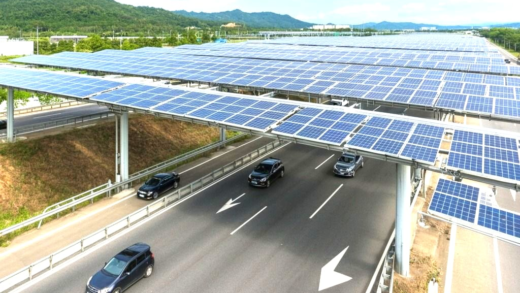Bizarre car innovations that never hit the market highlight consumer preferences emphasizing safety, practicality, and aesthetic appeal. Understanding these insights reveals critical lessons for manufacturers about aligning design with consumer needs and ensuring usability.
Strange Ideas
Bizarre car innovations often captivate our imagination, showcasing ideas that push the boundaries of conventional automotive design. Some of the wildest car innovations developed but never sold include:
- Folding Cars: These compact vehicles were designed to collapse for easy parking and storage.
- Hover Cars: Early concepts promised a future where cars would fly above traffic, eliminating congestion.
- Biodegradable Cars: Made from plant-based materials, these cars aimed to reduce environmental impact.
- Car with Built-in Kitchen: Some designs included a small kitchen area, allowing for meals on the go.
- Transparent Cars: Designed with see-through materials, these cars aimed to enhance visibility and safety.
Despite their intriguing concepts, many of these bizarre car innovations failed to hit the market. The reasons vary from high production costs to safety concerns and market demand mismatches. Exploring these innovations helps us understand the challenges manufacturers face when trying to introduce groundbreaking designs.
Public Reaction
The public response to these strange car ideas was often mixed. While some innovations sparked excitement, others raised eyebrows and skepticism. For instance, the hover car concept generated a buzz, with many dreaming of a future free from traffic jams. However, safety concerns and practicality issues led to skepticism about its viability.
Consumer feedback on bizarre car innovations frequently highlighted concerns such as:
- Safety: Many consumers questioned the safety of untested technologies.
- Usability: Features like built-in kitchens raised doubts about practicality.
- Aesthetic Appeal: The unusual designs often failed to resonate with traditional car buyers.
Understanding these reactions provides valuable insights into consumer preferences and the factors that drive successful automotive innovations.
Intended Benefits
Bizarre automotive designs aimed to offer unique advantages that appealed to specific consumer needs. For example, folding cars were intended to maximize urban parking efficiency, addressing a common issue in crowded cities. Similarly, biodegradable cars were developed with the intent to reduce carbon footprints and promote sustainability in the automotive industry.
The intended benefits of these strange innovations included:
- Environmental Impact: Innovations aimed to lessen pollution and reliance on fossil fuels.
- Convenience: Features like built-in kitchens sought to enhance the driving experience.
- Safety Enhancements: Transparent designs were meant to improve visibility and reduce accidents.
While the intended benefits were ambitious, the disconnect between consumer expectations and the actual practicality of these innovations often led to their downfall.
Funny Stories
Some of the most entertaining anecdotes in automotive history come from bizarre car technologies that never made it to market. One such story involves the infamous “Car-B-Q” concept, which featured a built-in grill in the trunk for tailgating enthusiasts. Imagine the hilarity of grilling burgers while stuck in traffic!
Another amusing tale is the “Car-Whale,” a prototype that attempted to mimic a whale’s design. The idea was to create a car that could “swim” in water, which led to a series of comical demonstrations that left spectators in stitches.
These funny stories remind us that while some innovations may fail, the creativity behind them can lead to laughter and inspiration in the automotive world.
Safety Concerns
Safety concerns often plagued bizarre car innovations, leading to their rejection by manufacturers and consumers alike. For instance, the idea of folding cars raised questions about structural integrity during collisions. Would a car that collapses be safe on the road? Similarly, hover cars, while exciting, posed significant risks related to airborne navigation and stability. The lack of regulations for flying vehicles created a frightening scenario for potential users.
Moreover, features like built-in kitchens introduced fire hazards and potential distractions for drivers. Transparency in car designs might have improved visibility, but it also raised privacy issues. Thus, many of these innovations, despite their intriguing concepts, were often deemed too risky to be introduced to the market.
Here are some specific safety concerns associated with these bizarre innovations:
- Collision Risks: Folding mechanisms might fail during accidents.
- Distraction: Built-in kitchens could divert driver attention.
- Unregulated Airspace: Hover cars risked crashes with buildings and other vehicles.
- Structural Integrity: Transparent materials might not withstand impact.
These safety issues significantly influenced public perception and ultimately led to the abandonment of many bizarre car innovations.
Tech Trends
Bizarre car innovations were often products of their time, influenced heavily by prevailing technology trends. For example, the rise of eco-consciousness in the late 20th century led to concepts like biodegradable cars. Manufacturers aimed to align with emerging sustainability trends, showcasing their commitment to reducing environmental impact.
Moreover, advancements in materials science paved the way for experiments with transparent cars. Innovations in lightweight composites promised better fuel efficiency and could potentially support unusual designs. However, these technologies were not fully mature, leading to challenges in practical application.
Key technology trends that influenced these bizarre innovations include:
- Environmental Awareness: Increased demand for sustainable solutions spurred ideas like biodegradable vehicles.
- Material Science: Development of new materials enabled experimental designs.
- Digital Integration: The rise of smart technology led to concepts such as built-in kitchens, although impractical.
While these tech trends inspired creative ideas, they also underscored the importance of consumer readiness and practical usability in automotive design.
Comparing Success
When comparing bizarre car innovations to successful automotive technologies today, it’s clear that practicality and consumer preference reign supreme. Failed innovations often lacked the essential features that modern cars provide, such as reliability, safety, and ease of use. For instance, while hover cars generated excitement, successful vehicles today focus on fuel efficiency and user-friendly designs.
Consider the evolution of electric vehicles (EVs). Unlike the strange innovations of the past, EVs successfully combined cutting-edge technology with consumer needs, resulting in widespread acceptance and market growth. This contrast highlights how bizarre ideas can inspire future technologies, even if they fail to make it to market.
Factors that differentiate successful technologies from failed ones include:
- Consumer Demand: Successful innovations cater to real-world needs.
- Safety Standards: Compliance with safety regulations is crucial.
- Technological Maturity: Well-developed technologies are more likely to succeed.
The lessons learned from bizarre innovations can help manufacturers navigate the complexities of consumer preferences and market demands.
Lessons Learned
The exploration of bizarre car innovations reveals critical lessons for manufacturers. First and foremost, understanding consumer preferences is essential. Many failed innovations stemmed from a disconnect between what manufacturers envisioned and what consumers actually wanted. For instance, while the concept of a car with a built-in kitchen sounds fun, practical considerations often outweigh novelty.
Additionally, manufacturers must prioritize safety and usability. As seen with folding cars and hover vehicles, innovative designs need to ensure they meet safety standards to gain consumer trust. This highlights the importance of thorough testing and development before introducing new features.
Key lessons include:
- Research Consumer Preferences: Understand what features are truly desirable.
- Focus on Safety: Prioritize safety in all innovations.
- Test Thoroughly: Ensure new technologies are viable before market introduction.
By applying these lessons, manufacturers can increase their chances of success and avoid the pitfalls of past failures.
Consumer Preferences
Bizarre car innovations reveal a lot about consumer preferences in the automotive industry. These failed innovations often highlight what consumers truly value when choosing a vehicle. For instance, the idea of a folding car, while innovative, didn’t resonate with buyers who prioritize safety and reliability over novelty. Additionally, features like built-in kitchens, though intriguing, raised practicality concerns that led to public skepticism.
Key insights into consumer preferences include:
- Safety First: Consumers consistently prioritize safety features over unique designs. Failed innovations often neglected rigorous safety standards, leading to their rejection.
- Practicality Matters: Features that enhance usability are more appealing than quirky designs. Innovations that lack real-world application struggle to gain traction.
- Aesthetic Appeal: The visual design of a vehicle plays a crucial role. Unusual aesthetics can alienate traditional buyers.
Understanding these factors helps manufacturers tailor their innovations to meet consumer demands. The automotive industry must adapt to changing preferences, focusing on safety, practicality, and appealing designs to avoid the pitfalls of bizarre car innovations that never made it to market.
Conclusion
The exploration of bizarre car innovations provides valuable insights into the automotive industry. Many of these innovations, despite their creativity, failed due to safety concerns, practicality issues, and a disconnect from consumer preferences. Lessons learned from these failures emphasize the importance of aligning design with consumer needs, prioritizing safety, and ensuring usability. Innovations that resonate with buyers not only foster market acceptance but also pave the way for future developments.
Ultimately, while the automotive world will continue to see imaginative ideas, the success of these innovations hinges on their ability to meet the real-world demands of consumers. Understanding what drives consumer preferences will be key in shaping the future of automotive design.





Comments are closed.